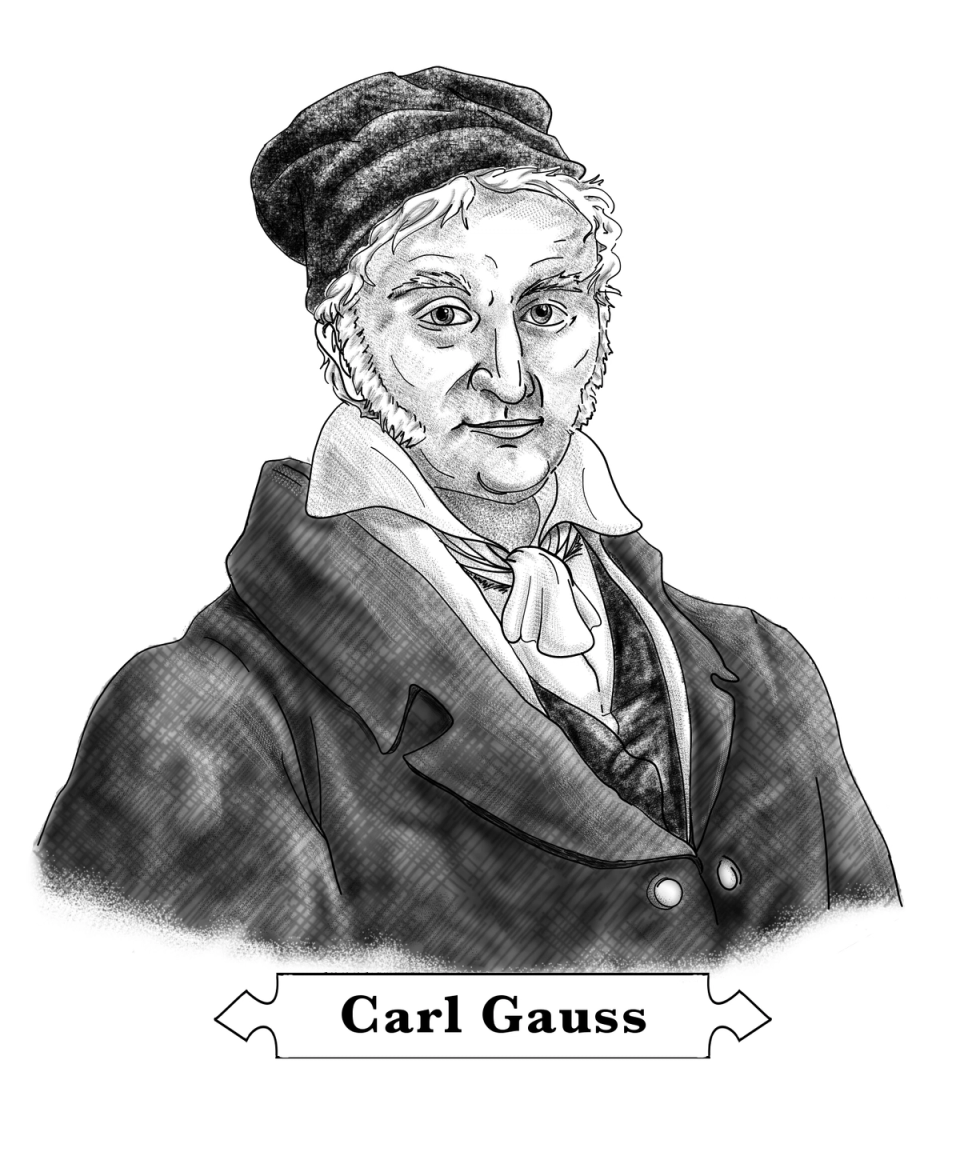Returning to planet earth
In the first part of Lazarus Math, we laid the foundations with numbers and dimensions. Recall the sets of numbers we explored are infinite sets. We viewed the infinite sets from a simple concept of a number line. Next, we discussed the unit circle, or number circle, which masquerades as an infinite curved number line.
Then we quickly advanced to the Expanse portion where we stretched the outer edges of infinity. We explored stories where the finite was converted to the infinite. We also reviewed multiple ways to calculate the sum of an infinite series.
Now we are on the third and final portion of Lazarus Math: Inhabit. Here, we bring our math back to earth a bit and consider topics that may be part of our every day life. We will still extend our math to infinity and beyond since that is part of math. But the applications will touch on topics you likely know some things about.
In the first section, “Be fruitful and multiply”, we build the foundation of numbers through the simple process of multiplication. Our focus on infinite sets so far has been primarily on addition. Multiplication is seemingly a basic topic. But, as we dig deeper, there are interesting stories to tell. We begin with the basics of multiplication: prime numbers.
What are the primes?
First, let’s refresh what prime numbers are. If we multiply , we get . That means is not a prime number because we calculated 6 by multiplying two numbers which are different from . We don’t count because any number multiplied by is that number. Thus, is prime because the only way to calculate from multiplying two positive integers is . With this definition, our first prime numbers are and . Note that , , (or ), , and . Thus, , and are not prime. We call them composite numbers.
In my imaginative mind, we can view the primes as a glass that is either half-full or half-empty, depending on our perspective. The half-empty perspective is that we cannot calculate a prime number by multiplying positive integers other than itself and . Being prime could be a lonely experience.
The half-full perspective is that we can calculate every positive integer that is not prime by multiplying prime numbers together. In our example, the composite numbers are , and . We calculated each by multiplying prime numbers. Notice we calculate , not as but as where is prime. That means the half-full perspective is that we create all positive nonprime integers (greater than 1) by multiplying prime numbers. Thus, rather than being “lonely numbers,” prime numbers are the building blocks for multiplication. They are the ground level, the foundation for all other positive integers.
Let’s consider an example of how prime numbers are the building blocks by considering a relatively large positive number, such as . Because 1,002 is even, we can divide it by , which means we can quickly determine is not a prime number but is composite. Since it is composite, we can calculate this number by multiplying only prime numbers together. We determined one factor must be 2, so divide 1,002 by 2 to get 501. Thus, 2 and 501 are factors. Our goal is to identify the prime “building blocks,” so break each of these two numbers down into factors which are prime. The number is prime, so no more work is needed there. What about ? It so happens that . That produces . The only factors for are and . Thus, is prime, which means the “prime building blocks” for the number are and .
Our large number building
I like to think of all the positive integers as part of a massive building. How would we create this building? Let’s assume we want to create it using multiplication. Now the question is: How can we build every positive integer by using multiplication?
The foundation would be all the prime numbers. As we stated there is only one way to cook up a prime number by multiplication and the recipe is simple: multiply itself by 1.
Then the floor above the foundation of primes are the composite numbers. We get the composite numbers by only choosing a set of prime numbers to multiply together. It should be clear that we can break down every composite number into factors of primes. But it may not be so clear to show this. Think of it this way. Every positive number is finite. If a number is not prime, then it is composite, which means we can divide by a factor to make the result smaller. We can’t repeat this process forever because every number is finite and every time we divide it by a number greater than 1, the result keeps getting smaller. So eventually, we must get to only primes. We had previously shown the prime factors for the first four composite numbers: 4 only needs 2, the number 6 needs 2 and 3, 8 only needs 2 (3 of them), and 10 needs 2 and 5.
We identified that there is only one way to cook up a prime number using positive integers and multiplication as a recipe. We also identified that every composite number can be broken down into factors of prime numbers. But what we haven’t asked is how many ways we can break down a composite number into prime numbers. There is at least one way. But is there more than one way? You can think about it in our cooking analogy where the “ingredients” we have to work with are the prime numbers and the action is multiplication. How many different combinations of prime numbers can we “cook up” using multiplication to produce a given composite number. In other words, we know we can create any composite number by multiplying only prime numbers, but how many ways can we do this for a single composite number?
Ways to build a composite
One possible answer is that it depends on the composite number. For the composite numbers we sampled, we only identified one combination. But that is a small sample size. Let’s consider our previous example 1,002. We identified that we can calculate 1,002 by multiplying the primes 2,3, and 167. Is there another combination of primes we can use? Here, it makes sense to ignore the order because we can write or , but both examples use the same ingredients: 2, 3, and 167. We’re only concerned about the numbers, not the order. For 1,002, it turns out that there is no other combination of primes out there that we can multiply to create 1,002. The prime numbers 2,3, and 167 are the unique set of primes that will do the trick.
So, in our small sampling, we have yet to discover a composite number that we can create by using more than one set of prime numbers. But if we think of some large number, it certainly seems possible that we can create that number by using two different sets of prime numbers. Can we? I want to encourage you to stop reading for a moment and take time to ponder this question. If we take a composite number and “break it down” to its prime numbers, is there more than one way to do this? This is not a trivial question. Some of the greatest minds of math have pondered this question. Here is a different and creative way to consider this question.
Arranging blocks
Assume I give you a certain number of toy blocks that are in the shape of a cube (the shape isn’t important). Your goal is to arrange the blocks in some sort of “rectangular way” such that there is no remainder. For example, if I give you 6 blocks you can arrange them in a 2 by 3 rectangle that is two-dimensional. If I give you 12 blocks, then you can arrange them as 4 by 3. But the catch is that each number must be a prime or the number 1. Since 4 is not a prime, then 4 by 3 doesn’t work. So you can go to a 3-dimensional view and arrange them as 2 by 2 by 3. Since all 3 numbers are prime, then you are successful. If I gave you 5 blocks, then you can arrange them in a row that is 5 by 1. Since 5 is prime, then this is acceptable, but if I gave you 6 blocks, you couldn’t go 6 by 1 since 6 is not prime. This analogy is a good way to visualize our challenge. The limit to this analogy is it is difficult to imagine after 3 dimensions. But, if I gave you 24 blocks, then I would creatively ask you to arrange them in a 2 by 2 by 2 by 3 way even though we couldn’t do that in real life. Notice the math that is at play is arranging blocks in some rectangular order, regardless of the dimension, is just another way to do multiplication.
If you can permit the unlimited number of dimensions to this story, then we can think of our problem as this. No matter how many blocks I give you, your job is to arrange them in a rectangular sort of way such that the number for each side is a prime number or 1 and that there are no remainders, or no blocks left over. So our question at play here is whether there exists a number of blocks that can be arranged in two different ways, where we only use prime numbers and 1? For example, perhaps one solution has 3 dimensions (3 factors) and another solution for the same number has 5 dimensions (5 factors). Could we find such an example? This seems like a difficult question to answer. Of course, all we need to do is find one example that has at least 2 cases and then our problem is solved. But what if there are no examples. How would we know that? How would we even prove that?
You can view an example of this question by considering the building in the beginning of this section. Notice it is built by a set of windows rather than blocks. However, the essence of the challenge is illustrated. From the picture, there are 17 sets of windows across and we can see 3 sets of windows going down. Thus, from this picture, we know that there are windows. So, from the picture, we can arrange 51 “windows” in a 17 by 3 way in two dimensions, which accomplishes our goal because both 17 and 3 are prime. That means for the number 51, we created one way, but is it the only way? For 51, the answer is yes. The only way is 17 by 3.
Given its complexity, it may not be a surprise that this question wasn’t answered until maybe the greatest mathematician of all time arrived. It wasn’t answered until 1801, which is relatively late in the world of math discoveries.
The answer is there is only one set of prime numbers for ANY composite number. In other words, for any composite number you choose, the strong statement from math is that there is one and only one set of prime numbers that we can multiply together to create that composite number. How do we answer such a statement with confidence? As usual, it is done through a math proof. The genius behind the proof is none other than Carl Gauss, one of the all-time giant math legends. Gauss was the first to prove that there is one and only one set of prime numbers that we multiply together to create any given integer greater than 1. How do you think you would go about proving such a statement? On my own, I don’t think I would know where to begin.
Thus, the wonderful discovery of math is that for any positive integer, there is one and only one set of prime numbers that multiplied together produce that number. This was a foundational discovery for math folks such that it was given this epic label: The Fundamental Theorem of Arithmetic, or FTA. What Mr. Gauss proved was and is a big deal. The proof of the FTA is beyond the scope of our Lazarus Math journey. But it is approachable for the eager math enthusiasts out there. It is part of the subject of number theory and requires several steps, but it is worth the journey.
You may have noticed in our building of positive integers that I omitted a number. We did not include 1. The number 1 is neither a prime number nor a composite number. But, in the world of multiplication, it has a special honor. We call the number 1 the unique multiplicative identity. Those are just big words to say that any number multiplied by 1 produces the same number.
Even though we will not prove the FTA, we are going to quickly put it to work to prove an idea we discussed earlier in Lazarus Math.
Proving root 2 is irrational
Recall in the Foundations section when we introduced numbers, we stated that is irrational. There are many ways to prove this is true, but one interesting way is to use the Fundamental Theorem of Arithmetic. Again, before we reveal the story, take a moment and identify how large this hill is we’re about to climb. Even though there are an infinite number of integers, we’re going to convince you that we know for sure that we cannot find any pair, call the pair and , such that we can write . Because there are an infinite set of positive integers to consider, it would be safe to refer to what we are climbing as a mountain rather than a hill. With such a large task to tackle, we need a strategy. It may seem odd, but we will prove that is irrational by first assuming that is rational. Let’s take this assumption and run with it to see where it leads. (Spoiler alert: it leads to another train wreck!).
Since we assume is rational, we can write , where and are integers. Next, multiply both sides by and rewrite as . Then square both sides to produce this equation: . So far, we’ve just performed basic algebra from our original assumption. Thus, if is rational, then we know that integers and exist in this equation.
At first glance, it seems surely there is some solution. If we try , then the right side becomes . Notice in order to have a solution for , we need this result to be a perfect square. We’re close because , but that is not quite 50. So, and are not a solution to the equation. There are a lot of possible choices for and so we must think of a different strategy rather than testing individual values for and .
The stage is set for our math magic. From the Fundamental Theorem of Arithmetic, we know there is a unique set of prime factors for each positive integer greater than 1. For example, consider the number 1,002. Recall the prime factors of 1,002 are 2, 3, and 167.
Now, consider the prime factors for the large number 1,004,004. This may seem difficult to answer until we realize that . Why does this help? Well, it means we can write this as . We know 2, 3, and 167 are prime. And because of the FTA, we know these are the only sets of prime numbers. How many factors are there? Now we are interested in counting duplicates. For this example, there are 6. The number 6 isn’t important. But what is important is 6 is an even number. Why does being even matter? Notice the left side of our original equation is . If we factor this number to its primes, we don’t know how many factors there will be, but we always know the number of factors will be even. We know that because of the squaring process. When we square a number, the number of prime factors is doubled and doubling any number makes it even. Thus, we can conclude that the total number of prime factors on the left side is an even number.
But how many prime factors are on the right side of our equation? The right side includes the term . Everything we just concluded about and must also be true for and . That means the total number of prime factors for must also be even. But notice we also have the factor 2 on the right side. Thus, the right side has one more factor 2. As a result, what can we say about the number of factors on the right side? The total number of factors must be odd because if you add 1 to any even number, the result is odd.
Now, let’s consider the entire equation. We know the left side has an even number of factors and the right side has an odd number of factors. Is that a problem? It’s not a problem if there are multiple ways to break down a number into prime factors. But, we just determined by the FTA that there is only one way. Since there is only one way, then the total number of prime factors must be either even or odd. However, we have an even number on the left side and an odd number on the right side. There is no number that meets this criterion, so this equation must be false.
This is our train wreck. We must review our work to identify the error. All of the logic was sound. The only possible error was our initial assumption that there exist integers and such that . This means that our assumption is false. This opens the mighty door to boldly believe there do not exist two integers that we can write as a fraction for . Hence, we proved that is not rational, which means it is irrational.

Figure 1: Carl Gauss, the legend
Embedded in this wonderful story is this seemingly simple equation, , which cannot be true if we require both and to be integers greater than 1. You may play with this equation a bit to try to find an example that is true. For example, if , then the left side is 16. Divide that by 2 gets us to 8. We need 8 to be a perfect square, which it isn’t, so doesn’t work. To me, if I just think of it as a normal equation, I would guess there would be at least one solution. But we just proved that there is not.















